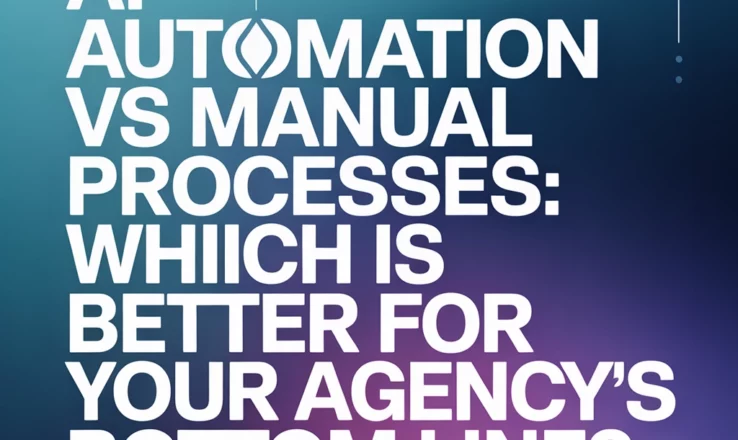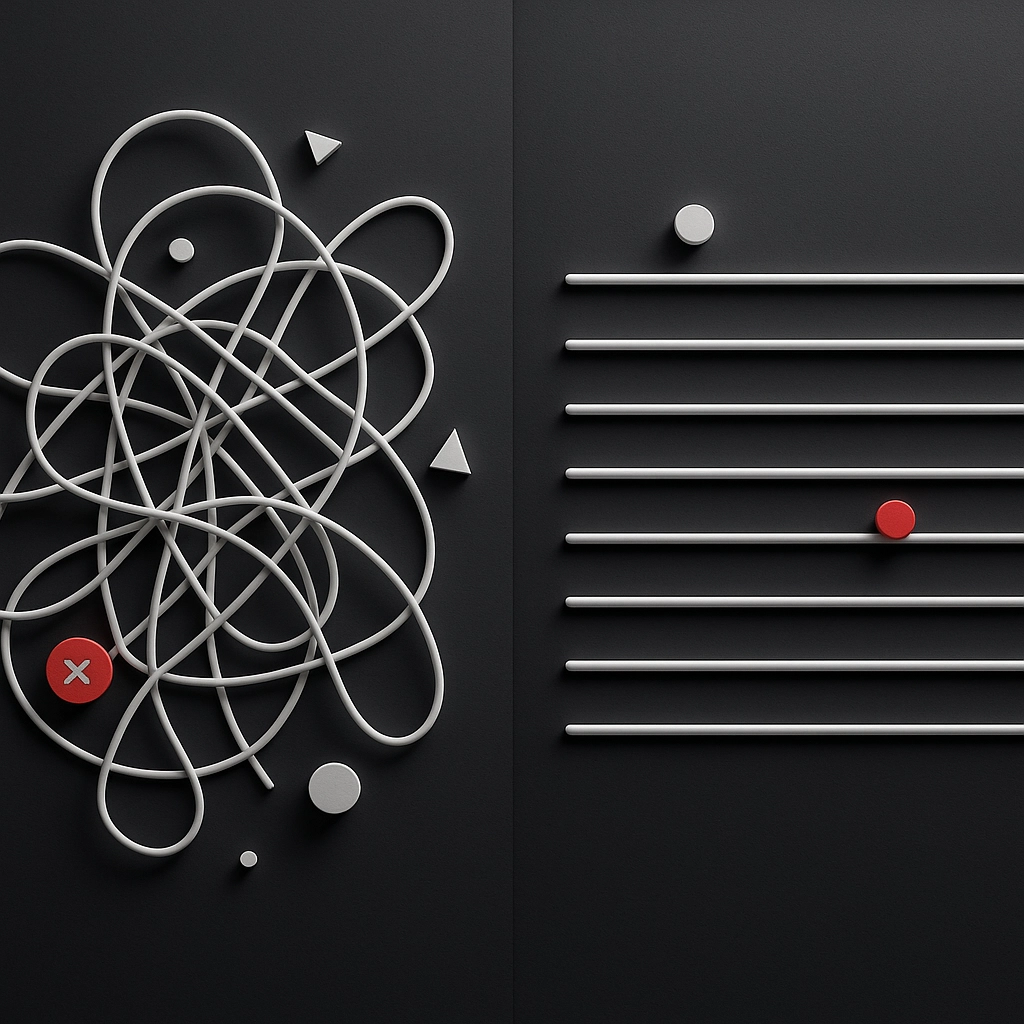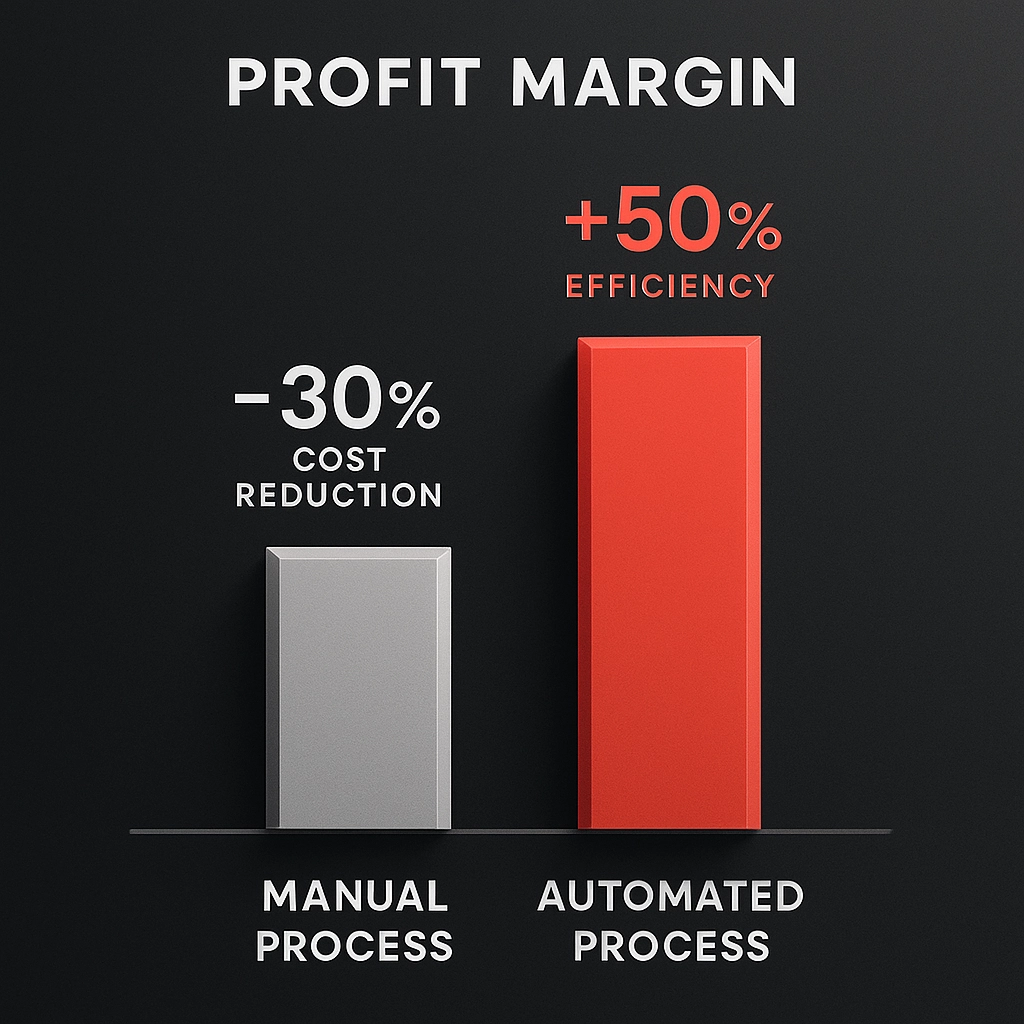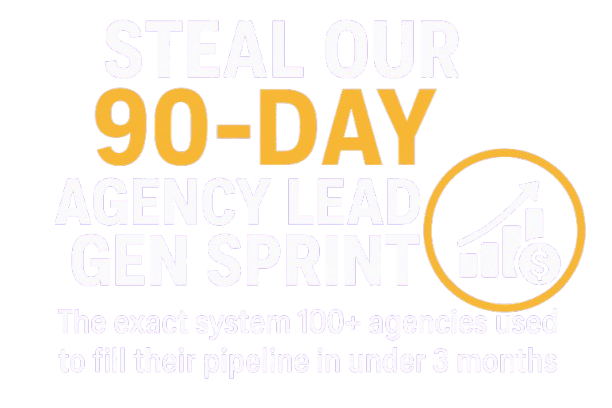
Here's the bottom line: AI automation will cut your operational costs by 20-28% while manual processes will slowly bleed your profit margins dry.
I've watched too many agency founders cling to manual workflows because they're "comfortable" or "proven," only to watch their competitors scale past them while maintaining healthier margins.
Let me walk you through exactly why this decision will make or break your agency's profitability, and more importantly, how to make the right choice for your specific situation.
The Real Cost of Manual Processes (It's Higher Than You Think)
First, let's get brutally honest about what manual processes are actually costing your agency. I'm not talking about the obvious labor costs, I'm talking about the hidden profit killers that most agency founders completely miss.
Your error rate is destroying client relationships.
Manual processes carry error rates of up to 20%, and every mistake costs you roughly 5-10 hours of recovery time plus potential client churn. When your team manually updates campaign data, processes invoices, or manages client reporting, they're introducing variables that compound into expensive problems.
Your team's time allocation is backwards.
Right now, your senior strategists are spending 30-40% of their billable hours on administrative tasks that could be automated. That's $50,000-$75,000 in lost revenue per strategist annually, money that should be flowing directly to your bottom line.
Scalability hits a brick wall.
Every new client requires proportional increases in labor. There's no operational leverage. Your cost per client stays fixed or increases, which means your profit margins stay flat or shrink as you grow.
Here's what this looks like in practice: You land a $50,000 monthly retainer client, but servicing them requires 60 hours of manual work monthly. At a $100/hour internal cost, you're spending $6,000 in labor, leaving you with $44,000 gross profit. Scale to 10 clients, and you need 600 hours monthly, that's 4 full-time employees just for execution.

The AI Automation Advantage (And Why the Math Always Wins)
Now let's flip the script. AI automation requires a significant upfront investment: typically $15,000-$50,000 for a comprehensive implementation: but the return profile is completely different.
Error rates drop to under 1%.
Your automated systems don't have bad days, don't misread data, and don't forget critical steps. This alone saves you 10-15 hours weekly in damage control and client relationship management.
Your team structure transforms overnight.
Instead of hiring 4 execution specialists, you hire 1 automation manager and redeploy your existing team to high-value strategic work. Your labor costs decrease while your service quality increases.
Scalability becomes exponential.
Once your automation systems are in place, servicing 50 clients requires roughly the same operational overhead as servicing 10. Your cost per client plummets while your profit per client skyrockets.
Let's run the same numbers: That $50,000 monthly client now requires 15 hours of human oversight instead of 60 hours of manual work. Your internal cost drops to $1,500, leaving you with $48,500 gross profit. Scale to 10 clients, and you still need just 150 hours monthly: less than 1 full-time employee.
The compounding effect is where things get interesting.
Year one, you're roughly break-even after your automation investment. Year two, you're saving $200,000+ annually. Year three, those savings compound to over $400,000 because your operational costs stay fixed while your client base grows.
The Team Dynamics Reality Check
Here's what nobody talks about: The choice between manual and automated processes fundamentally changes your team culture and retention rates.
Manual processes create burnout factories.
Your best people spend their days doing repetitive, mind-numbing work instead of solving complex strategic challenges. I've seen agencies lose their top talent because senior strategists got tired of manually updating spreadsheets and generating reports.
Automation creates retention magnets.
When your team focuses on strategy, creative problem-solving, and client relationship building, job satisfaction skyrockets. Your people feel challenged, valued, and professionally fulfilled.
Start tracking this metric immediately: What percentage of your team's time is spent on work that could be automated?
If it's over 25%, you're hemorrhaging talent and profit simultaneously.

The Scalability Framework That Changes Everything
Let me give you the exact framework I use to evaluate automation opportunities in agencies. This will help you identify which processes to automate first for maximum profit impact.
Step 1: Audit Your Time Allocation
Track every team member's time for two weeks. Categorize activities as:
- Strategic/Creative (high-value, requires human judgment)
- Administrative/Repetitive (automatable)
- Client Communication (hybrid: partially automatable)
Step 2: Calculate Your Automation ROI
For each automatable process, calculate:
- Current labor cost (hours × hourly rate)
- Error correction costs (mistakes × recovery time)
- Opportunity costs (strategic work not being done)
- Automation setup cost
- Monthly automation maintenance cost
Step 3: Prioritize by Profit Impact
Rank processes by:
- Frequency (daily tasks get higher priority)
- Labor intensity (higher hour requirements = bigger savings)
- Error rates (mistake-prone processes = immediate wins)
- Client visibility (automating client-facing work improves satisfaction)
The Implementation Reality (What Actually Works)
Based on my work with 500+ agencies, here's the implementation sequence that maximizes profit impact while minimizing disruption:
Phase 1: Client Reporting Automation (Months 1-2)
Start here because it's highly visible to clients and consumes massive team time. Automated reporting systems typically save 20-30 hours weekly per account manager.
Phase 2: Data Collection and Processing (Months 3-4)
Automate data pulls from advertising platforms, analytics tools, and CRM systems. This eliminates manual data entry errors and frees up analytical bandwidth for strategic insights.
Phase 3: Workflow Management (Months 5-6)
Implement automated task assignment, deadline tracking, and progress monitoring. This creates accountability without micromanagement and scales project management infinitely.

The Profit Margin Mathematics
Let's get specific about profit impact. I'm going to show you the exact numbers from a $2M annual revenue agency I worked with last year.
Pre-Automation Snapshot:
- Monthly Revenue: $165,000
- Monthly Labor Costs: $95,000
- Administrative Overhead: $25,000
- Net Profit Margin: 27%
Post-Automation Reality (12 months later):
- Monthly Revenue: $240,000 (45% growth with same team size)
- Monthly Labor Costs: $85,000 (redeployed to strategic work)
- Administrative Overhead: $15,000 (automated most processes)
- Automation Costs: $3,000 monthly
- Net Profit Margin: 52%
The transformation isn't just about cost cutting: it's about profit multiplication. When your team focuses on high-value work, they generate more revenue per hour while operational costs decrease.
Making the Decision: Your Strategic Framework
Here's exactly how to determine whether AI automation makes sense for your agency right now:
If your agency generates under $500K annually:
Start with selective automation of your highest-impact repetitive tasks. Focus on client reporting and basic data processing. The full automation suite can wait until you reach $1M+ revenue.
If you're in the $500K-$2M range:
This is your automation sweet spot. You have enough complexity to justify the investment and enough scale to see immediate ROI. Implement comprehensive automation across reporting, workflow management, and data processing.
If you're above $2M annually:
Automation isn't optional: it's survival. Your competitors are already implementing these systems, and manual processes are actively limiting your growth potential.
The Bottom Line Decision Framework
Stop overthinking this decision. Here's your action plan:
Week 1: Complete the time allocation audit I outlined above. Get the real numbers on where your team's hours are going.
Week 2: Calculate your current profit per client and identify your biggest operational bottlenecks.
Week 3: Research automation tools specific to your service offerings. Focus on platforms that integrate with your existing tech stack.
Week 4: Make the decision and commit to implementation.
The agencies winning in 2025 and beyond aren't the ones with the biggest budgets or the most clients: they're the ones with the most efficient operations and the highest profit margins per client.
AI automation delivers both. Manual processes deliver neither.
Your choice will determine whether you're running a scalable business or just buying yourself an expensive job. Choose accordingly.
